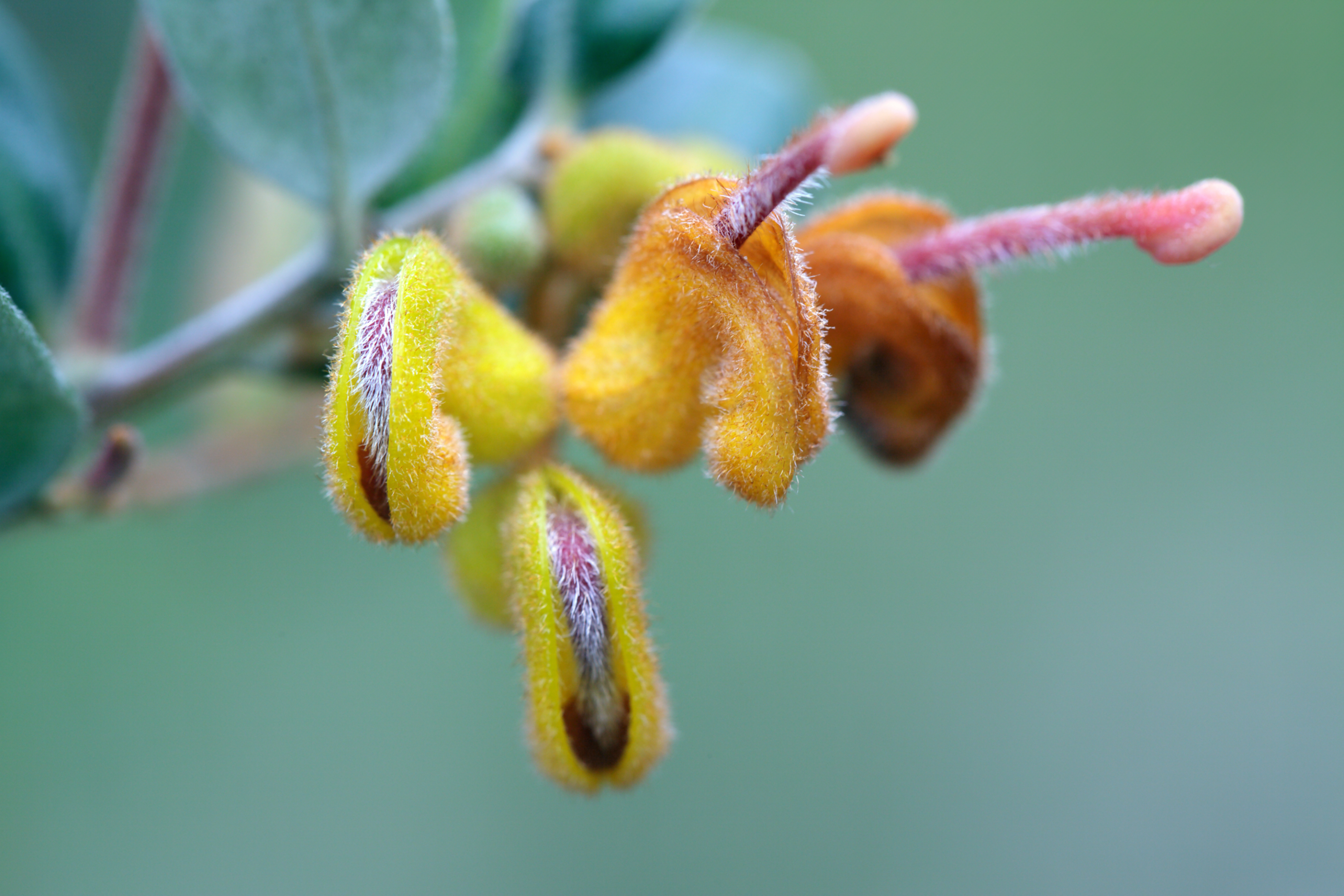Golden grevillea
(Grevillea chrysophaea)

Description
Grevillea chrysophaea, commonly known as golden grevillea, is a species of flowering plant in the family Proteaceae and is endemic to Victoria in Australia. It is a spreading shrub with oblong to almost linear leaves, and dull to golden yellow flowers with a red or orange-red style. Grevillea chrysophaea is a spreading, or occasionally prostrate, shrub that typically grows to a height of 0.3–2.5 m (1 ft 0 in – 8 ft 2 in). Its leaves are oblong to almost linear, 15–60 mm (0.59–2.36 in) long and 3–15 mm (0.12–0.59 in) wide with the edges turned down or rolled under. The upper surface of the leaves is glabrous or softly-hairy and the lower surface is woolly to velvety hairy. The flowers are arranged in groups of two to eight on the ends of branchlets and are dull to golden yellow, the pistil 15–21.5 mm (0.59–0.85 in) long with a red or orange-red style. Flowering mostly occurs from June to November and the fruit is a hairy, elliptic follicle 11–13 mm (0.43–0.51 in) long. Grevillea chrysophaea was first formally described in 1854 by Carl Meissner in the journal Linnaea: ein Journal für die Botanik in ihrem ganzen Umfange, oder Beiträge zur Pflanzenkunde from an unpublished description by Ferdinand von Mueller. Golden grevillea usually grows in eucalypt or banksia woodland in the Brisbane Ranges and in Gippsland in southern Victoria. It is listed as "rare in Victoria" on the Department of Sustainability and Environment's 2014 Advisory List of Rare Or Threatened Plants In Victoria. Plants in the genus Grevillea are shrubs, rarely small trees with simple or compound leaves arranged alternately along the branchlets. The flowers are zygomorphic and typically arranged in pairs along a sometimes branched raceme at the ends of branchlets. The flowers are bisexual, usually with four tepals in a single whorl. There are four stamens and the gynoecium has a single carpel. The fruit is a thin-walled follicle that splits down only one side, releasing one or two seeds before the next growing season The genus Grevillea was first formally described in 1809 by Joseph Knight from an unpublished manuscript by Robert Brown. Knight gave the spelling Grevillia, corrected by Brown in 1810 to Grevillea in Transactions of the Linnean Society of London. The genus was named in honour of Charles Francis Greville, an 18th-century patron of botany and co-founder of the Royal Horticultural Society.
Taxonomic tree:







